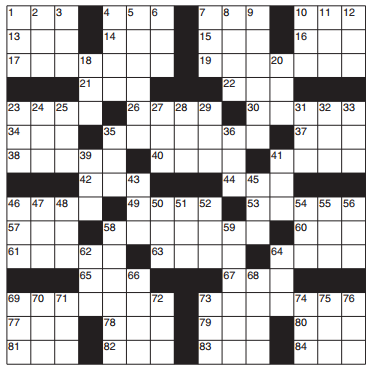
The daily New York Times crossword puzzle fills a grid measuring 15×15. The smallest number of clues ever published in a Times puzzle is 52 (on Jan. 21, 2005), and the largest is 86 (on Dec. 23, 2008).
This set Bloomsburg University mathematician Kevin Ferland wondering: What are the theoretical limits? What are the shortest and longest clue lists that can inform a standard 15×15 crossword grid, using the standard structure rules (connectivity, symmetry, and 3-letter words minimum)?
The shortest is straightforward: A blank grid with no black squares will be filled with 30 15-letter words, 15 across and 15 down.
The longest is harder to determine, but after working out a nine-page proof Ferland found that the answer is 96: The largest number of clues that a Times-style crossword will admit is 96, using a grid such as the one above.
In honor of this result, he composed a puzzle using this grid — it appears in the June-July 2014 issue of the American Mathematical Monthly.
(Kevin K. Ferland, “Record Crossword Puzzles,” American Mathematical Monthly 121:6 [June-July 2014], 534-536.)
